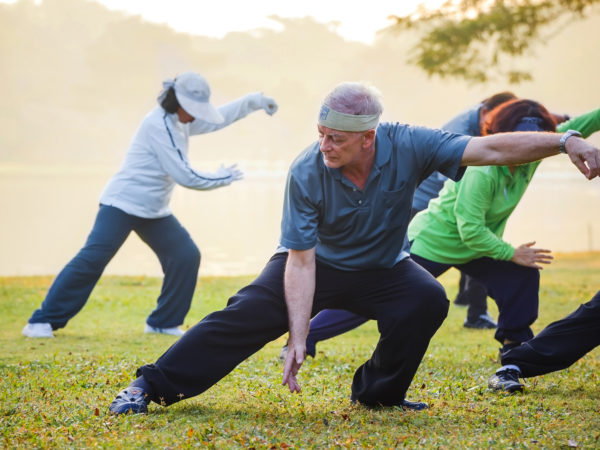Balance Board: Are You Losing Your Balance?
What can you tell me about the use of a rocking balance board? Do you think it is a safe exercise device for improving balance and muscle tone?
Andrew Weil, M.D. | September 24, 2013

Proper balance depends on the coordination of three of your senses: your eyes, your sense of spatial orientation (the inner sense that tells you which way your feet or hands are pointing even with your eyes closed), and the vestibular system, which encompasses the fluid-filled semicircular canals in the inner ear and informs the brain and eyes about the position of your head. Each of these diminishes with age, making balance more difficult and falls more likely.
I discussed your question about balance boards with Dan Bornstein, an exercise physiologist and project coordinator for the U.S. National Physical Activity Plan. He says that he hesitates when asked about the safety of a piece of equipment since that largely depends on how it is being used and by whom. Rocking balance boards vary considerably in the level of “instability” they provide. For someone with very poor balance, Dan says that using a highly unstable balance board could be dangerous, while a well-trained athlete might derive little benefit from working on a relatively stable one.
If you want to improve your balance, you don’t need a balance board. Dan suggests that any standing exercise (e.g. squats, biceps curls, shoulder presses, or even just standing still) can become a balance-enhancing exercise by altering your stance. He lists the following exercises as a progression from the most stable way to perform a standing exercise to the least stable, without the use of any equipment:
- Standing with your feet parallel to each other at about hip-width apart.
- Standing in a lunge or split stance (one foot forward and the other back) with the feet about hip-width apart.
- A lunge or split stance with your feet in line with one another (a very narrow stance).
- Standing on one foot.
In addition to these variations in stance, Dan adds that if you simply close your eyes, you significantly increase the challenge.
For patients of any age, I frequently recommend tai chi, which has been proven to help reduce the odds of falling. (Fear of falling often limits the activity of older people.) Tai chi also reduces the risk of injury if you do fall. In addition, you can learn balance exercises at a gym with a trainer who can show you how to use boards or inflatable exercise balls safely. If you have a problem, physical therapy can help you reduce the risk of falls with individually tailored exercises. You might also consider yoga, with its many balance poses, and Feldenkrais therapy to improve body awareness.
Andrew Weil, M.D.









